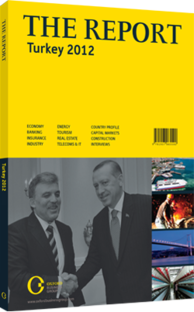Türk Traktör: Agricultural equipment
THE COMPANY: Agriculture is a major contributor to Turkey’s GDP, despite sluggish growth in recent years. The sector’s share of GDP dropped from 10.1% in 2000 to 8.3% in 2009, and its share of total employment has also declined, falling from 35% in 2001 to 30% in 2007. Though Turkey is one of the few countries to be self-sufficient in food, the agricultural sector is poorly structured and inefficient. It is fragmented, with a large number of small farms highly dependent on government subsidies for survival, and which have a low rate of mechanisation due to the high cost of machinery. Economic growth and stability, government support for agriculture, farmers’ purchasing power, weather conditions affecting harvests and interest rates are the primary drivers for tractor sales in Turkey. With 90% of purchases financed through bank loans, restricted accessibility to credit in the wake of the global economic crisis had an impact on sales. Thanks to its presence since 1954, wide product range and extensive dealership network, Türk Traktör is the leader in the domestic tractor market, with a share of over 50%. Being a Koç Holding and CNH joint venture has enhanced customers’ trust and loyalty, and the firm has preserved its dominance in the domestic market despite the number of competitors increasing from four in 2001 to 36 in 2010. The fact that Türk Traktör’s rival, Uzel, has been losing ground in the domestic tractor market as a manufacturer since 2008, due to ownership disputes, enabled the company to grab further market share. Türk Traktör also has an advantage in export markets, thanks to its access to CNH’s global sales network. Exports contribute around 30% of total revenues. The predominant destination for exports is the US, with a share of 45%. Following rapid growth in the domestic tractor market in 2011, we project it will drop to 54,000 units in 2012, down 10% year-on-year, due to the high base year and the reclassification of the state bank’s subsidy rate on agricultural loans. On the contrary to the earlier practice in 2011, government subsidy rate for tractor purchases up to the price of TL35,000 (€14,875) will be 50% and between TL35,001 (€14,875.43) and TL500,000 (€212,500) will be 25% in 2012. It should be noted that there was no price limitations in tractor purchases for subsidy rates in earlier practices. However, the extension of the assembly support cooperation agreement between Türk Traktör and Otokar to the end of July 2012 signals a positive outlook for the first half of the year. The company’s domestic sales are projected to fall with the market’s contraction, with exports holding at 9000 units in 2012. The contracting domestic volumes combined with flat exports are expected to create pressure on profitability in 2012.
Our target price of TL39.85 (€16.94) per share for Türk Traktör yields 48% upside potential. The company has an attractive dividend distribution policy, having completed investments of over $100m over the past decade. Türk Traktör distributed TL200m (€85m) gross dividends from its 2011 net earnings in April 2012, offering a dividend yield of 10.2%. It trades at 49% discount, based on a 2012 enterprise value/earnings before interest, taxes, depreciation and amortisation multiple of 4.7x over its global peers’ median of 9.7x. The stock outperformed the İMKB 100 by 71% in 2011 on the back of rapid growth in the domestic tractor market, which reached 60,341 units, up from 36,000 in 2010.
Turkey has the sixth-largest number of tractors in the world, at 1.3m. However, 44% of these are more than 25 years old and ready to be replaced. Based on them having an approximate economic life of 20-24 years, Turkey has an annual replacement potential of 55,000. A scrap incentive to stimulate domestic tractor sales is on the government’s agenda, but this is not expected to materialise in 2012.
Considering the volatile nature of the business we did not incorporate the replacement potential into our growth estimates. We believe that the domestic market will be within the range of 35,000-50,000 units in the long term even without a scrap incentive, which is above its historical level of some 30,000-40,000 units.
You have reached the limit of premium articles you can view for free.
Choose from the options below to purchase print or digital editions of our Reports. You can also purchase a website subscription giving you unlimited access to all of our Reports online for 12 months.
If you have already purchased this Report or have a website subscription, please login to continue.

